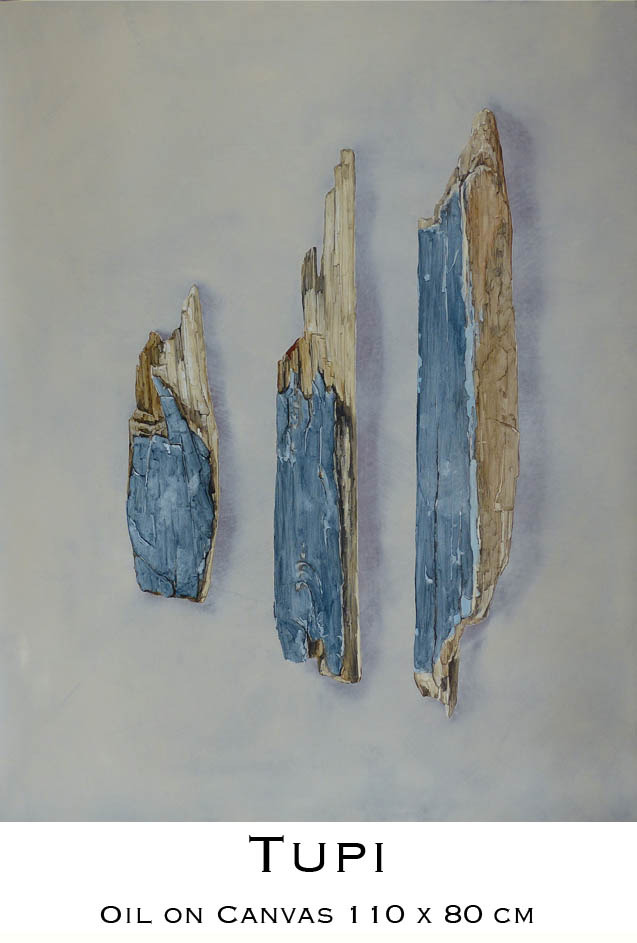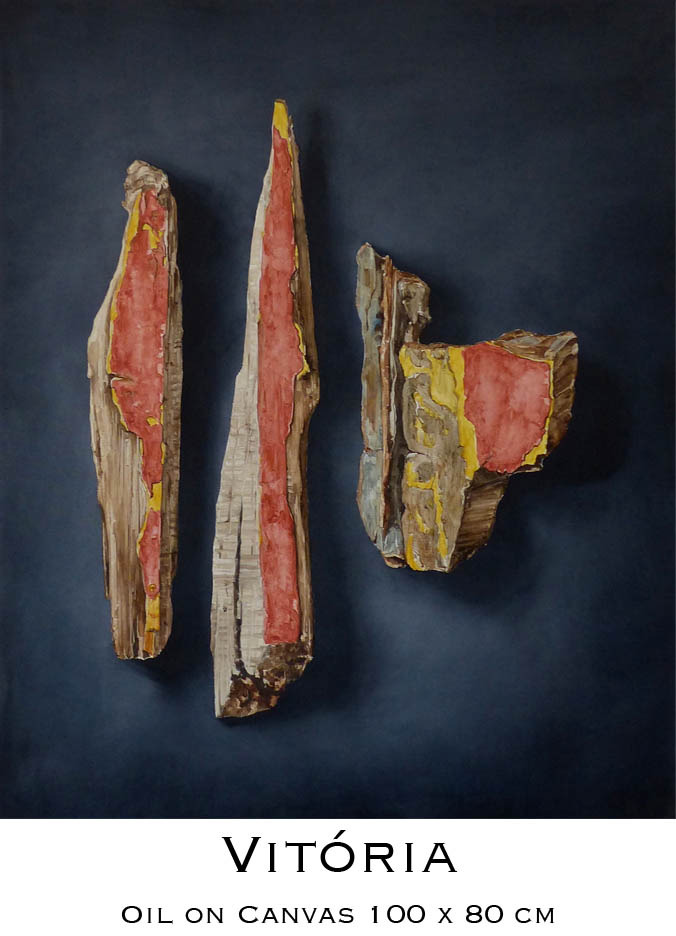Rio Negro
oil on canvas - 2014
Rio Negro paintings show pieces of wooden boats from Brazil. These pieces are very colorful, sometimes with numerous layers of color, transformed by the power of the tropical sun and by the movement of the ocean and rivers.
The Brazilian coastline measures 7,491 km, the 16th longest national coastline in the world. Having a vast seaside in front of the Atlantic Ocean it is natural that the first contact between Brazil and Europe happened by the sea.
The early history of Brazil is linked to the Portuguese maritime expeditions: in 1500 Pedro Álvares Cabral led 13 caravels departing from Portugal towards the new world and discovered Brazil for the Europeans.
In 1808 Rio de Janeiro’s coast welcomed the Portuguese Royal family fleeing the threat of Napoleon and later, in 1822, Brazilian navy was involved in the country’s fight for independence. Portugal’s naval forces in the area were later transferred to the newly independent country and were involved in the battles and rebellions that marked Brazilian history.
The Cisplatine War, the River Plate conflicts and the Paraguayan War are some examples.
The names of the Rio Negro paintings refer to the names of ships of the Brazilian Navy reflecting the history, nature and culture of the country. El Rei, Santa Cruz, Vitória were the names of caravels from Cabral’s fleet. Imperador was part of the fleet that brought the Portuguese Royal family to Rio de Janeiro in 1808. Bahia and Brasil participated in the Paraguayan War. Rio Negro and Solimões are research vessels and their names honor the two rivers that meet to form the Amazon River.
Rio Negro collection is my praise to flexibility. It portrays pieces of wood at different stages of aging while exposed to the forces of Nature.
























